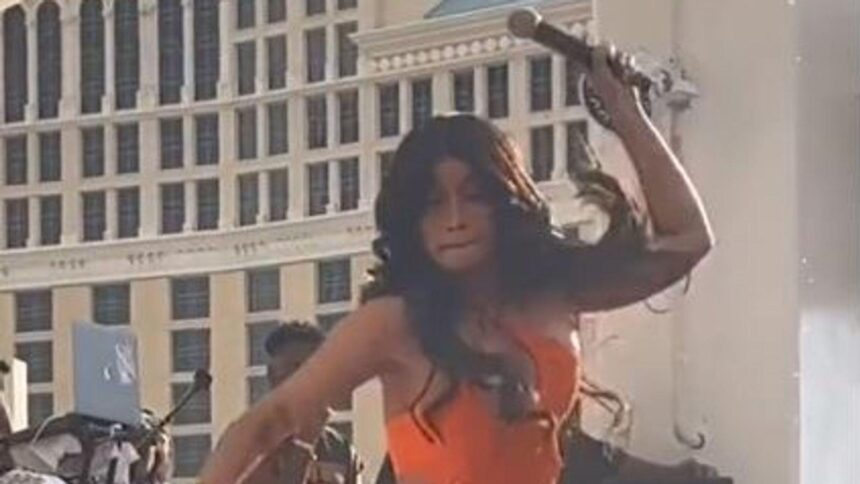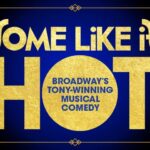Las Vegas Nightclub Incident: Woman Sues Cardi B After Being Hit by Microphone
Unexpected Injury at Cardi B’s Las Vegas Show Triggers Legal Action and Public Debate
During a recent performance by rapper Cardi B at a bustling Las Vegas nightclub, an unforeseen accident occurred when a microphone thrown by the artist struck a female attendee. The moment, captured on video and rapidly shared across social media platforms, ignited widespread discussion about safety protocols at live entertainment events. The injured woman has as initiated a lawsuit against Cardi B and the venue, alleging negligence and emotional trauma resulting from the incident.
According to the legal complaint, the plaintiff claims the microphone was swung carelessly without adequate regard for the audience’s proximity, causing both physical harm and psychological distress. She is seeking damages covering medical bills, lost income, and compensation for pain and suffering. This case has prompted venue operators and event planners nationwide to reassess their safety measures, focusing on:
- Stricter crowd management and clear separation between performers and spectators
- Mandatory safety training sessions for artists
- Installation of protective barriers around stages
- Explicit liability clauses in contracts to clarify responsibilities
| Safety Element | Previous Standard | Proposed Enhancement |
|---|---|---|
| Microphone Handling | Limited safety measures | Defined stage zones and equipment protocols |
| Performer Safety Training | Informal advice | Certified safety workshops |
| Audience Protection | Open stage access | Physical barriers and restricted zones |
Legal Perspectives: What the Lawsuit Could Mean for Liability and Negligence
Legal analysts are scrutinizing the case to forecast its potential outcomes. Central to the lawsuit are the principles of negligence and liability. If the plaintiff can prove that the venue and Cardi B’s team failed to implement adequate safety measures or ignored foreseeable risks, her case will gain substantial weight. The extent and seriousness of the injuries, including medical treatment and lasting effects, will also influence the compensation sought.
Experts note that the involvement of a high-profile celebrity and the viral nature of the incident add layers of complexity. Key considerations include:
- Duty of care: Evaluating the obligations of both the performer and venue to protect attendees.
- Comparative responsibility: Determining if the plaintiff’s actions contributed to the accident.
- Media influence: Assessing how viral exposure might affect jury opinions and settlement negotiations.
- Insurance implications: Understanding coverage limits for injury claims at entertainment events.
| Potential Legal Resolution | Explanation |
|---|---|
| Settlement | An out-of-court agreement providing compensation without admission of fault. |
| Case Dismissal | The lawsuit may be dropped if evidence of negligence is lacking. |
| Court Verdict | A judge or jury determines liability and awards damages if applicable. |
Reevaluating Venue Safety: Industry Response to the Incident
The event has cast a spotlight on the adequacy of safety protocols at entertainment venues, especially regarding crowd control and performer-audience interactions. Critics argue that current measures may fall short in preventing accidents during dynamic performances. In response, the nightclub’s management has pledged to conduct a extensive review of their safety policies to better protect patrons.
Industry specialists recommend several improvements, including:
- Enhanced training for performers on safe conduct and audience engagement
- Establishing clear physical boundaries between the stage and the crowd
- Utilizing real-time surveillance to quickly identify and address incidents
- Updating liability agreements to cover unexpected accidents during shows
| Safety Component | Current Practice | Recommended Upgrade |
|---|---|---|
| Performer Safety Guidelines | Basic briefings | Compulsory safety workshops |
| Stage Barriers | Limited or absent | Robust physical barriers |
| Incident Detection | Reactive response | Proactive monitoring systems |
| Liability Communication | Standard disclaimers | Comprehensive risk disclosures |
Preventative Measures: How Performers and Audiences Can Enhance Safety
To foster a safer environment for everyone involved, venues should adopt thorough safety protocols and provide ongoing training for staff on crowd control and performer interaction. Artists are advised to rehearse their stage movements meticulously and maintain clear communication with their teams to avoid sudden actions that could cause harm. Additionally, installing protective barriers or designated zones can help minimize close contact risks.
Key safety recommendations for attendees and performers include:
- Refrain from reaching into the performance area or handling stage equipment unexpectedly.
- Stay aware of surroundings and respect personal space during live shows.
- Performers should ensure a firm grip on microphones and other gear to prevent accidental drops or swings.
- Venues might consider using lightweight,wireless equipment designed to reduce injury potential if mishandled.
| Stakeholder | Safety Recommendation |
|---|---|
| Venue Operators | Enforce crowd and stage management policies |
| Performers | Exercise caution with equipment and stage movements |
| Audience Members | Remain vigilant and honour performance boundaries |
Final Thoughts: Implications for Live Event Safety and Accountability
The lawsuit arising from the Las Vegas nightclub incident underscores the critical need for enhanced safety and accountability in live entertainment settings. As the legal proceedings advance, the case may set crucial precedents influencing how artists and venues manage risk and protect audiences. Cardi B and her legal team have not yet released an official statement regarding the lawsuit.Simultaneously occurring, the viral footage continues to fuel conversations among fans, legal experts, and industry stakeholders about liability and safety standards in the entertainment world.









